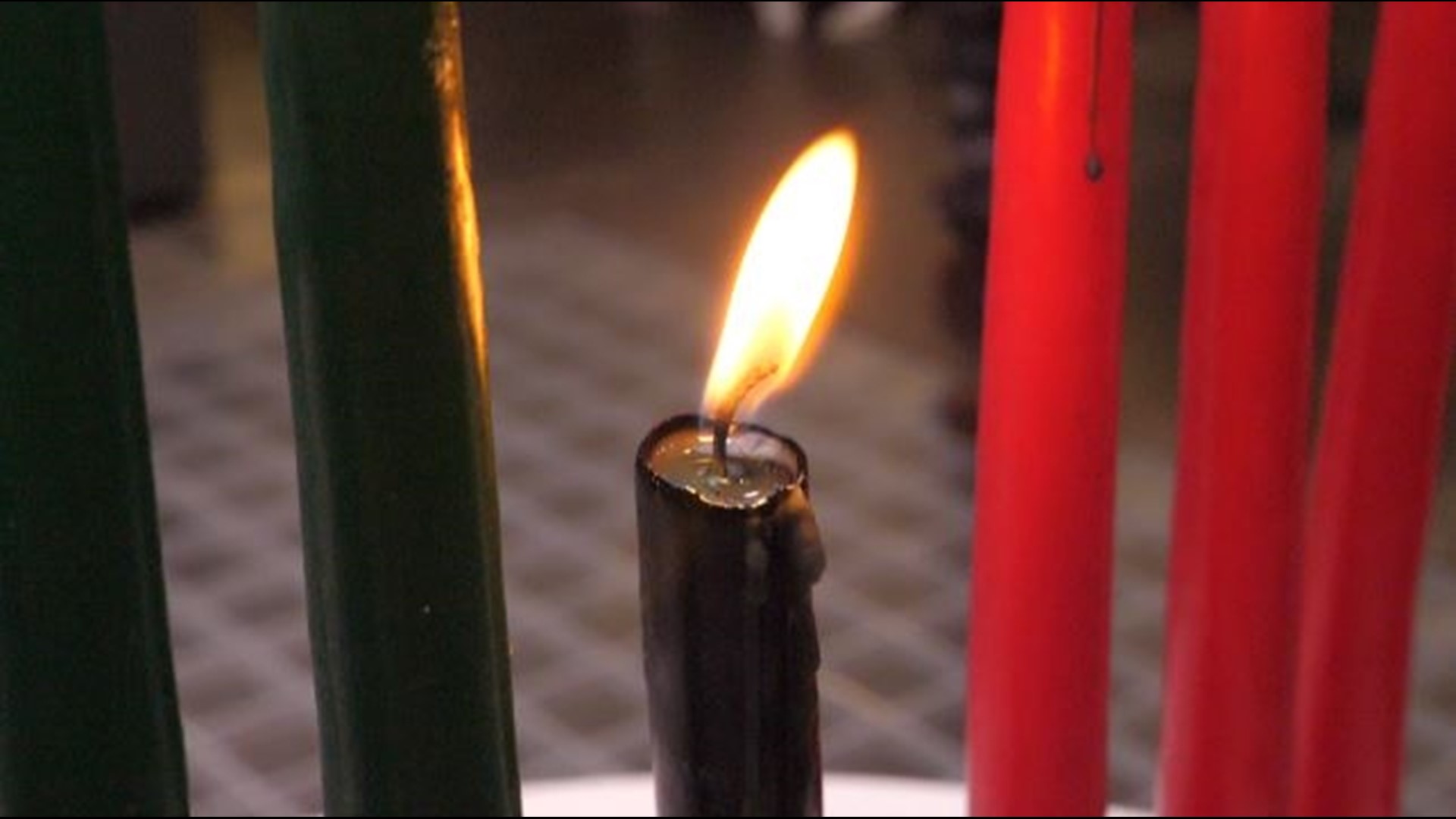MINNEAPOLIS — The Cultural Wellness Center is hosting daily Kwanzaa celebrations at the Midtown Global Market. The locations are within blocks of each other in south Minneapolis.
"Many do not know that the Cultural Wellness Center is part owner of the Midtown Global Market," said T. Mychael Rambo, a beloved storyteller, theater professional and educator.
As the center's brand ambassador, Rambo is emceeing each day.
Events began Tuesday, the first day of Kwanzaa, and continue through Sunday, the sixth day. Kwanzaa is a 7-day holiday, but a gathering will not be held on the final day, Jan. 1, because the building will be closed on New Year's Day. Hours are 2-6 p.m. Monday through Saturday, and 12-4 p.m. Sunday.
According to the National Museum of African American History & Culture, Kwanzaa is "an African American and Pan-African holiday that celebrates history, values, family, community and culture."
It was created in 1966 by Dr. Maulana Ron Karenga, and while some people visiting the Midtown Global Market on Wednesday were just learning about the traditions, Cultural Wellness Center CEO Atum Azzahir says she's participated since the beginning.
"In those days, I mean you heard very little about it," said Azzahir, who also serves as the center's chief cultural compliance officer and elder consultant in African Ways of Knowing. "It was not publicized. It was not accepted. It wasn't acceptable because people thought it was in conflict or competing with Christmas."
The second day of Kwanzaa honors the principle Kujichagulia, which means self-determination. Wednesday's celebrations began with traditional drumming and an invitation of ancestors into the space.
"We ask for their permission to perform the celebration," Rambo explained.
Several people in the crowd shouted out the names of their ancestors, and the group responded with ashe, a word from the Yoruba people of Nigeria often translated to "thank you" or "so shall it be."
After a moment of silence, a pianist called Brother Charles played Lift Every Voice and Sing, which was first written as a poem in 1900 and is known as the Black National Anthem today.
Rambo then lit the kinara, a 7-candle candleholder, starting with the black candle in the center to mark umoja or unity for the first principle of Kwanzaa, and a red candle for day two, kujichagulia. He explained to the crowd that the lighting of candles alternates between red and green. Meaning, that he'll light a green candle on Thursday, the third day of Kwanzaa representing the principle ujima or collective work and responsibility, and on Friday, he'll light another red candle. The pattern repeats.
"The red is for the blood and the struggle, the green is for the future or the harvest itself and Black is for the people," Rambo said.
After that, a man called Brother Ryan led a group exercise, with participants doing stretches, arm circles and squats at their chairs. Then, everyone was invited to a free meal prepared by the center's chef, Robert Taylor.
Several vendors were positioned next to the stage, selling things like books, clothing, crystals and incense.
In addition to shopping - a way to support Black-owned businesses, the center provided free blood pressure and glucose tests - a way to emphasize the importance of wellness.
"The African American experience in this country is one that is brought with stress, trauma but it’s also joy," Rambo said. "We move forward in a way of thriving not just surviving and then finding ways to really embrace all culture but make sure that we understand the richness of our own."
Wednesday's featured artist was jazz violinist Ernest Bisong. Activities planned for each day are listed on the Cultural Wellness Center website.
Watch more local news:
Watch the latest local news from the Twin Cities and across Minnesota in our YouTube playlist:

